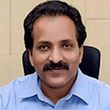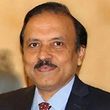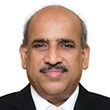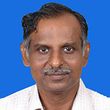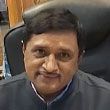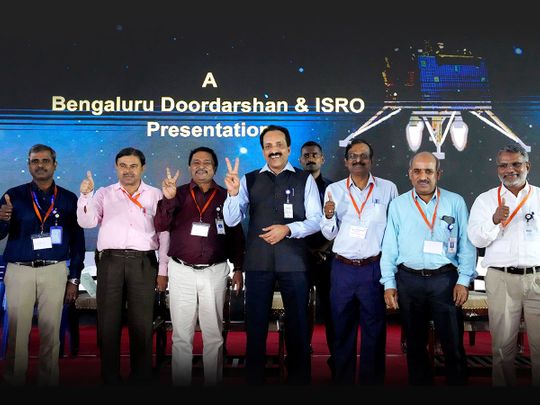
India’s historic landing on the moon has been the result of the hard work of hundreds of scientists and engineers who pooled together their expertise and resources to achieve the goal.
For every scientist at the forefront of the Chandrayaan-3 mission, there are dozens of others who have spent many hours poring over data and studying design to ensure that India became the first nation to land a craft near the Moon’s south pole.
“There are about 54 female engineers/scientists who worked directly in the Chandrayaan-3 mission. They are associate and deputy project directors and project managers of various systems working at different centres,” IANS quoted a senior official of ISRO as speaking on condition of anonymity.
For Chandrayaan-3, the Mission Director was Mohan Kumar and the Vehicle/Rocket Director was Biju C. Thomas.
Here’s a look at some of the senior scientists who headed the project.
Dr. S. Somanath, Chairman, ISRO
As Chairman of the Indian Space Research Organisation (ISRO), Dr S. Somanath heads important missions.
As a young engineer, Somanath set right an anomaly along with two of his seniors in a Polar Satellite Launch Vehicle (PSLV) that was ready for takeoff.
Normally in such a situation, the rocket launch would have been postponed. The other option was trying to set the problem right, when the rocket is fuelled up - a risky proposition.
The three officials, including the young Somanath, set right the problem. The rocket lifted off safely and made the mission a success.
Nearly two decades later, Somanath heads ISRO.
Son of a Hindi teacher, Somanath pursued B.Tech in Mechanical Engineering but had an active interest in rocketry.
In 1985 Somanath got a job with ISRO and joined the Vikram Sarabhai Space Centre (VSSC) in Thiruvananthapuram, which was responsible for rockets.
Somanath took his B. Tech in Mechanical Engineering from TKM College of Engineering, Kollam and Masters in Aerospace Engineering from Indian Institute of Science, Bangalore with specialisation in Structures, Dynamics and Control.
Rising up the ranks, he joined GSLV MkIII Project during 2003 and was the Deputy Project Director responsible for overall design and integration of India’s heaviest and most powerful rocket. He was the Project Director of GSLV Mk-III (now LVM-3) from June 2010 to 2014.
Somanath also led the team of LPSC (ISRO’s Liquid Propulsion Systems Centre) to complete the development and qualification of CE20 cryogenic engine and the C25 stage, which was successfully flown in GSLV MkIII-D1 flight.
Prior to becoming ISRO Chairman, Somanath headed VSSC as its Director.
Dr S. Unnikrishnan Nair, Director, Vikram Sarabhai Space Centre
Dr Unnikrishnan Nair is a distinguished scientist heading the Vikram Sarabhai Space Centre (VSSC) - India’s rocket centre - as well as a Malayalam short story writer.
Dr. S. Unnikrishnan, is a BTech in Mechanical Engineering from Kerala University, ME in Aerospace engineering from the Indian Institute of Science, Bengaluru and a doctorate in Mechanical Engineering from Indian Institute of Technology-Madras.
That apart, he also holds an MA in Telecommunications and Space Law from NALSAR, Hyderabad.
Unnikrishan began his career in VSSC in 1985 and was involved in the development of various aerospace systems and mechanisms for Indian rockets - PSLV, GSLV and LVM3.
He played a key role in the maiden orbital re-entry experiment, Space Capsule Recovery Experiment (SRE), right from the study phase onwards to its mission accomplishment in 2007.
He was associated with Human Spaceflight Programme from its study phase since 2004 and was the Project director for Pre-project technology development activities.
Unnikrishnan led the project team for defining the Vehicle configuration, Systems engineering and in identifying various critical technology development areas to initiate the pre-project activities.
As founding Director of the youngest Centre in ISRO, the Human Space Flight Centre (HSFC) Unnikrishnan has led the team for Gaganyaan Project and established the Astronaut Training Centre at Bangalore in HSFC at Bangalore.
Dr P. Veeramuthuvel, Project Director, Chandrayaan-3
Son of a railway employee, Dr. P. Veeramuthuvel, has been in charge of the overall mission of putting together Chandrayaan-3 in coordination with multiple ISRO centres.
Since the launch of Chandrayaan-3 on July 14, Veeramuthuvel and his team have constantly monitored the operations of the spacecraft at the mission control room at the ISRO Telemetry, Tracking and Command Network Centre (ISTRAC).
However, during the last minutes of the moon lander’s descent, the team had to be content to just watch the proceedings as the landing procedures were automated.
Hailing from Tamil Nadu’s Villupuram district, Veeramuthuvel completed his Diploma in Mechanical Engineering and went on to get a Degree in Engineering.
Later he did his PhD at IIT-Madras. He joined ISRO in 2014 and was made project director after the failure of Chandrayaan-2 landing mission in September 2019.
M. Shankaran, Director, U R Rao Satellite Centre
M. Shankaran took over as Director of U R Rao Satellite Centre (URSC), the lead Centre in the country for design, development and realisation of all satellites of ISRO, on June 1, 2021.
He is currently leading the satellite fraternity to realise various types of satellites to meet the national requirements in the areas like communication, navigation, remote sensing, meteorology and inter-planetary exploration.
During his 35 years of experience in URSC/ISRO, he has contributed primarily in the areas of Solar arrays, Power systems, Satellite Positioning System and RF communication systems for Low Earth Orbit(LEO) Satellites, Geostationary Satellites, Navigation Satellites and Outer Space Missions like Chandrayaan, Mars Orbiter Mission (MOM) and others.
He is now leading the efforts to the miniaturisation of avionics systems, indigenisation of electronics and power system components, micro/mini satellite bus development and others. He is also spearheading the avionics system design, realisation and qualification for the Gaganyaan Programme.
He joined the ISRO Satellite Centre (ISAC), currently known as URSC after obtaining his Master’s degree in Physics from Bharathidasan University, Tiruchirappalli in 1986.
Dr. V. Narayanan, Director, Liquid Propulsion Systems Centre
Dr V. Narayanan is the scientist heading the centre that provides the propulsion power to Indian rockets.
An Alumni of Indian Institute of Technology- Kharagpur, Dr Narayanan stood first for M.Tech in Cryogenic Engineering in 1989 and has a Ph.D in Aerospace Engineering (2001).
A rocket propulsion expert, Narayanan joined ISRO in 1984 and functioned in various capacities before becoming Director of the Centre. As Project Director for C25 Cryogenic Project, he led the team and successfully developed C25 Cryogenic Stage.
When India was denied the complex Cryogenic Propulsion Technology for GSLV Mk-II vehicle, Narayanan played a crucial role in the successful development of Cryogenic Upper Stage (CUS) and contributed in making it operational for the GSLV Mk II vehicle.
He has guided the team and designed a 200-tonne thrust Lox-Kerosene Semi Cryogenic Rocket Engine.
During the initial period from 1984 to 1988 in ISRO, he also contributed to the Solid Propulsion System realisation for launch vehicles. As Associate Director of LPSC, he was guiding the liquid propulsion activities of ISRO and was instrumental in finalising the Liquid Propulsion Roadmap of ISRO for the next 20 years.
A. Rajarajan, Director, Satish Dhawan Space Centre
Dr Rajarajan first joined India’s rocket centre – Vikram Sarabhai Space Centre (VSSC) - and over the years rose through the ranks.
He now heads the Satish Dhawan Space Centre (SDSC) that provides the solid fuel for the rocket and also the country’s rocket port in Sriharikota in Andhra Pradesh.
A mechanical engineer, Rajarajan joined VSSC’s Fibre Reinforced Plastics Division and over the years grew within the organisation and assumed additional challenges.
B.N. Ramakrishna, Director, ISTRAC
Ramakrishna is the director ISRO Telemetry, Tracking and Command Network Centre (ISTRAC), the facility in Bengaluru which is the control centre for deep space missions that puts together data from deep space network stations.
Ramakrishna is the director ISRO Telemetry, Tracking and Command Network Centre (ISTRAC), the facility in Bengaluru which is the control centre for deep space missions that puts together data from deep space network stations.
For the latest moon mission, ISTRAC is linked to an ISRO deep space network station located at Byalalu outside Bengaluru and to foreign deep space monitoring earth stations like those of the Jet Propulsion Laboratory of USA and ESA of Europe.
Ramakrishna holds a Master’s degree in science from Bengaluru and is considered an expert in the areas of navigation using satellites and orbit determination of spacecraft.
S. Mohana Kumar, Mission Director for launch of Chandrayaan-3
ISRO’s Mission Director for the July 14 launch of Chandrayaan-3, Mohana Kumar, was the person who made the first formal announcement of the successful launch from Sriharikota on July 14.
The ISRO veteran was in March this year the mission director for an LVM3 launch of satellites for the One Web India 2 service.
Mohana Kumar is a senior scientist at the Vikram Sarabhai Space Centre in Thiruvananthapuram, which is the centre for building rocket capabilities for the ISRO.
He has been with ISRO for more than 30 years.
- with inputs from IANS


